Archival Show and Tell #2
The US Navy’s Secret Recognition Markings of 1933
by Dana Bell
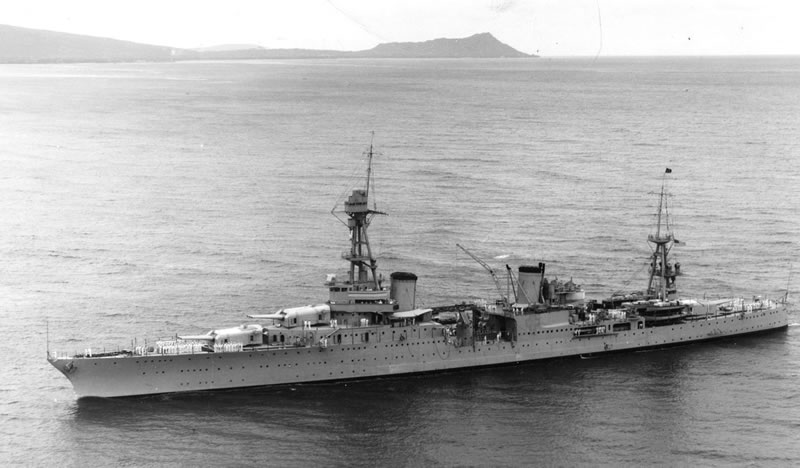
|
This well known image, photographed in Hawaiian waters, shows Scouting Force flagship Augusta with a previously unexplained cross marking on its hangar (beside the second funnel). Newly discovered documents revealed that the cross was part of a system of secret recognition markings tested by the Navy in early 1933. |

HyperScale is proudly supported by Squadron
US Navy Secret Recognition Markings of 1933 |
Some archival discoveries introduce new materials that had otherwise been long forgotten; other discoveries explain things we’ve looked at for years without understanding. This article uses a series of reports discovered last July to explain photos that some of us have wondered about for decades.
Military science has shown a continuing interest in secret identification systems – distinguishing features that could be interpreted only by forces using special equipment. Most modern systems are electronic, such as the IFF (Identification - Friend or Foe) equipment introduced during World War II. But during the first few decades of the twentieth century, engineers concentrated on two-dimensional markings that would become visible only with special filters.
The Navy’s Bureau of Engineering (BuEng) proposed one such system to the Commander-in-Chief, US Fleet (CinCUS) in October 1932. Chief of Bureau S. M. Robinson proposed to supply the fleet with special paints that would resemble the standard interwar Navy ship color (Gray Number 5) in daylight, but would appear lighter or darker when viewed though a red filter. While the paints had been successfully tested on land, Robinson hoped the fleet would run additional experiments during Fleet Problem XIV in early 1933.
CinCUS agreed to test the paints on the cruisers and carriers assigned to the fleet problem’s Black Force. By mid-January, thirty gallons of paint (in four different formulas) and thirty dark red Eastman Kodak #70 filters were delivered to Scouting Force (whose ships would be assigned to the Black Force). ScoFor’s seven new heavy cruisers received formulas 7D (dark) and 7L (light), while the carriers Lexington and Saratoga received formulas 4D (dark) and 4L (light). The 7D and 4D paints were to appear darker than the standard ship color when viewed through the red filter, or slightly greenish under tungsten light. Seen through the red filters, 7L and 4L were lighter than the ship color, or slightly pinkish under tungsten light. BuEng offered no explanation of the differences between formulas 4 and 7.
Each ship was to assign only experienced painters to the project, with care taken not to exchange brushes, stirring sticks, or even rags when applying the paint. Painters were to apply a solid symbol in the lighter paint, with a border of the darker paint added for contrast. The chart below, taken from the original instructions, shows the symbols and their positions; Chicago and Northampton added an additional marking to either side of one of their stacks to test the effect of heat on the experimental paint.
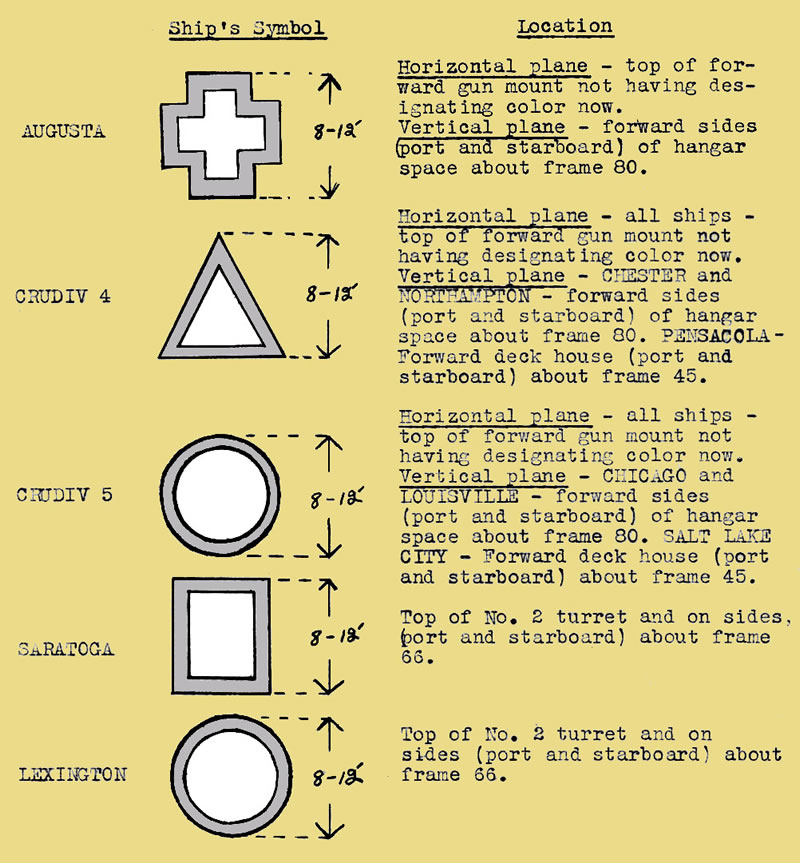
Note that frame 66 on Saratoga and Lexington would be located roughly beneath each ship’s second 8-inch gun turret.
The ships applied their paint while stationed on the West Coast, then sailed for Hawaii. Screening destroyers, the ships themselves, and several aircraft recorded their observations, with reports submitted at the beginning of February. Several ships noted that in all but the clearest light, the filters were too dark to allow observers to see the markings or the ships! Ships had to be fairly close for their markings to be visible with binoculars or telescopes, so close that the markings could often be distinguished with the naked eye, while the ships were easily identified without reference to the special markings. In all, the experiment suggested that larger marking might prove effective with further tests, but the Navy let the matter drop, and the secret insignia became a minor footnote in the Fleet’s color and marking history.
Note that while the photos seen in this article show the secret markings on heavy cruisers, no markings can be seen in the contemporary photos of Lexington and Saratoga. This is probably the result of the very contrasty images of those two ships, but it is also possible that the formula 4D and 4L paints used on those two ships were less readily photographed that the 7D and 7L paint applied to the cruisers.
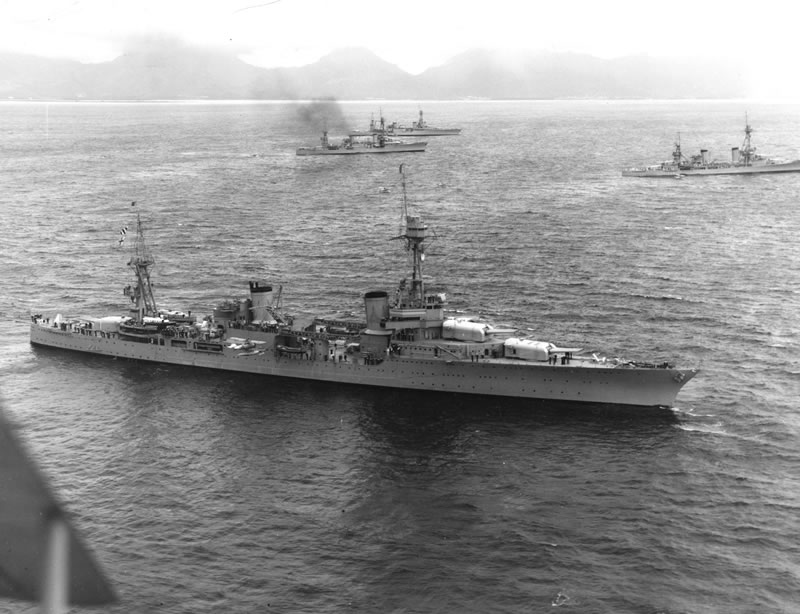
Baker recovery; with engines stopped, four Black Force cruisers recover their aircraft in calm waters. Four Vought O3U Corsairs can be seen taxiing to the ships in the background (left to right: Louisville, Chester, and Salt Lake City) while a fifth is hoisted aboard Northampton in the foreground.
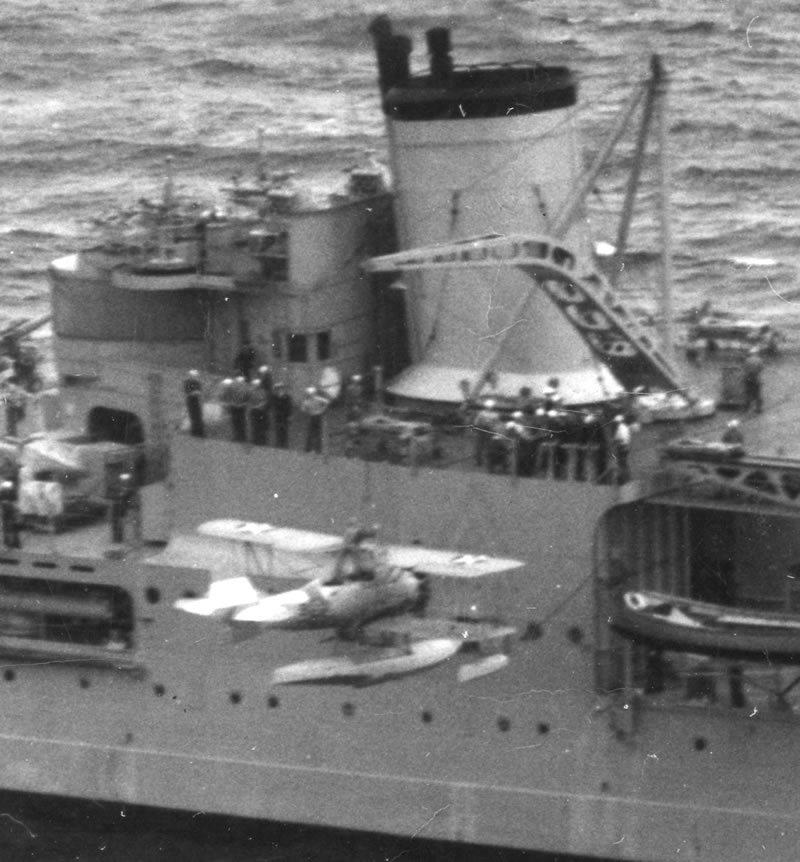
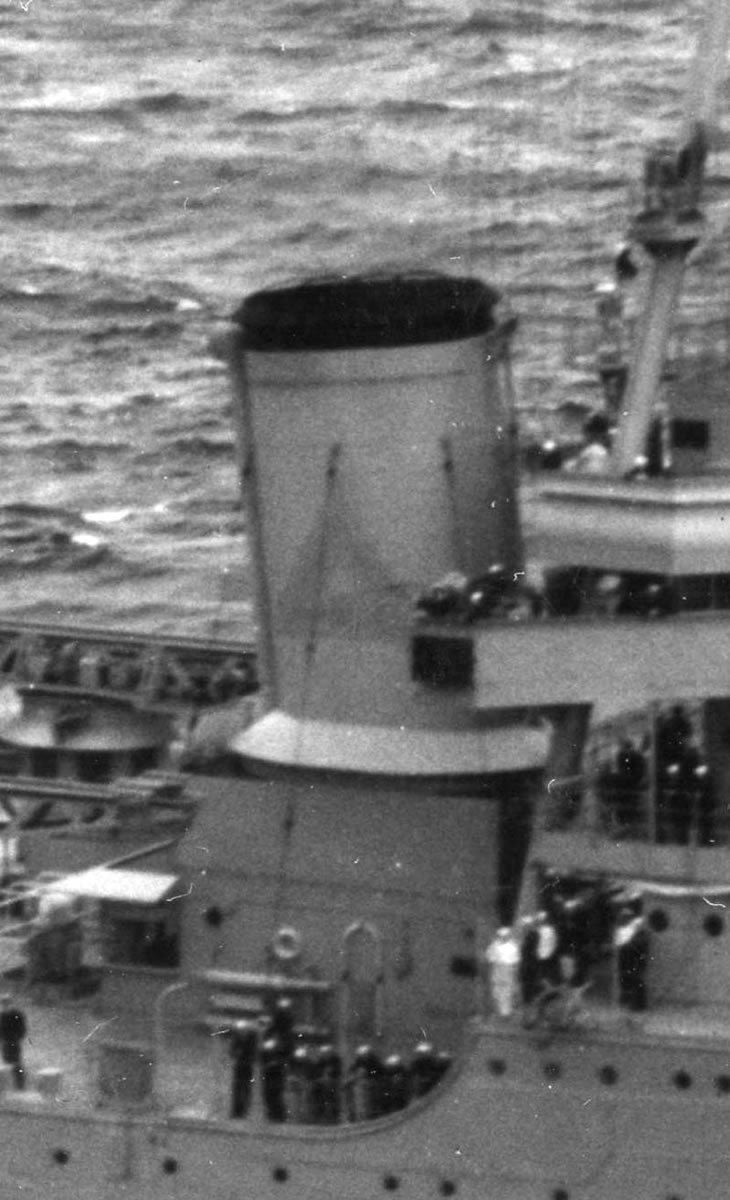
Although its fuselage code is difficult to read in this detail from the image above, here is Corsair 9-S-1 being hoisted in by Northampton’s crew. Partially blocked by the aircraft’s right wing, the CruDiv Four triangle is easily visible on the side of the hangar. Northampton repeated the triangle on the forward stack to test the experimental paint’s resistance to heat.
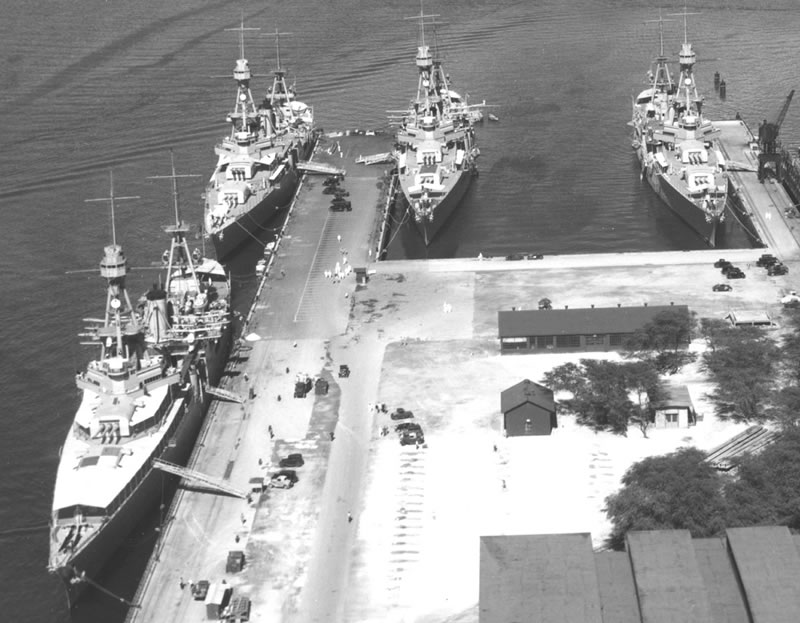
Photographed at Pearl Harbor in February 1933, these Black Force heavy cruisers show a variety of markings atop their forward turrets. Nearest the camera at 1010 Dock, Scouting Force flagship Augusta carries a red-white-blue-yellow checkerboard on Turret 1 (and, unseen here, on Turret 3). Abaft of Augusta is Chicago, flagship of Cruiser Division Five. At the time, CruDiv Five identified its ships with a color marking on Turret 2, in this case the red-white-blue-yellow bands of the divisional flagship. In the center, at Berth 3, is Chester. Assigned to CruDiv Four, she follows that division’s practice of wearing distinguishing colors on Turret 1; her color is red, denoting her position as the division’s second ship. At the right, at Pier 1, is Northampton. The red-white-blue-yellow bands on Turret 1 mark her as CruDiv Four’s flagship. On each ship, the secret insignia is barely visible as a smudge on the forward turret that didn’t carry the colorful markings; aviators viewing the ships reported the same results as they attempted to observe the experimental markings.
Text and Images Copyright ©
2012 by Dana Bell
Page Created 21 December, 2011
Last Updated
21 December, 2012
Back to Reference Library |
Home |
What's New |
Features |
Gallery |
Reviews |
Reference |
Forum |
Search